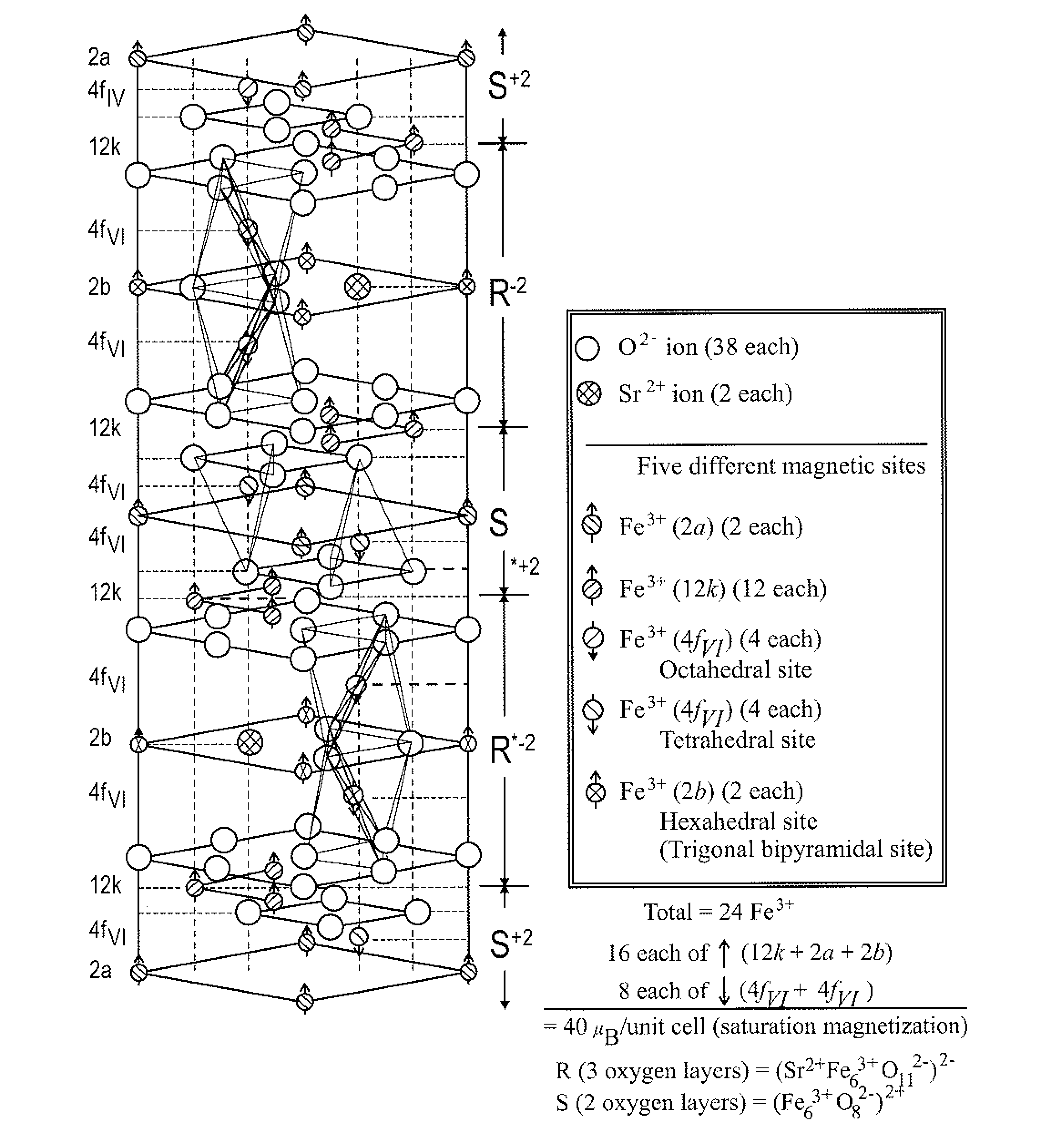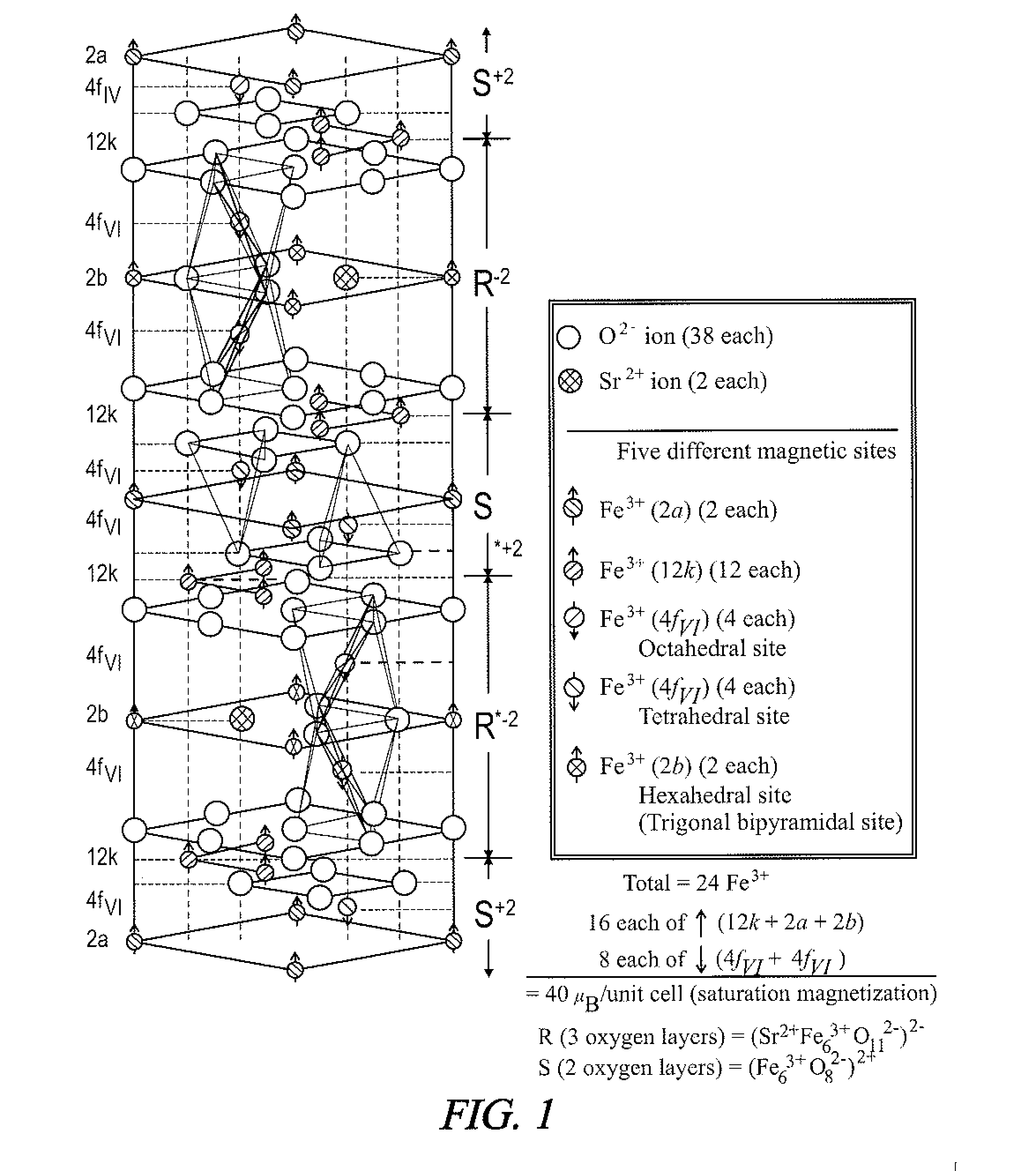Magnetic exchange coupled core-shell nanomagnets
a core-shell nanomagnet and magnet technology, applied in the direction of magnetic materials, magnetic bodies, waveguide devices, etc., can solve the problems of high synthetic temperature of about 1200 celsius, complex phase transformation, and limited low-frequency range antenna applications
- Summary
- Abstract
- Description
- Claims
- Application Information
AI Technical Summary
Benefits of technology
Problems solved by technology
Method used
Image
Examples
Embodiment Construction
[0031]The present disclosure generally pertains to antenna materials that are particularly suited for high frequency (e.g., GHz) applications. In one embodiment, an antenna is fabricated using an M-type hexaferrite, such as a tin (Sn) and zinc (Zn) substituted M-type strontium hexaferrite (Sn / Zn-substituted SrM: SrFe12−2xZnxSnxO19), thereby enabling antenna miniaturization, broad bandwidth, and high gain. In one exemplary embodiment, the value of “x” in the compound SrFe12−2xZnxSnxO19 is between 2 and 5, but other values of “x” are possible in other embodiments. Some of the Fe cations in M-type strontium hexaferrite (SrM: SrFe12O19) are substituted with tin (Sn) and zinc (Zn) to achieve soft magnetic properties for the antenna. Thus, the coercivity and permeability are lower and higher, respectively, than those of pure SrM. Such fabricated hexaferrite chip antennas have broadband characteristics and show good radiation performance at various frequencies, including in the GHz frequen...
PUM
| Property | Measurement | Unit |
|---|---|---|
| coercivity | aaaaa | aaaaa |
| coercivity | aaaaa | aaaaa |
| coercivity | aaaaa | aaaaa |
Abstract
Description
Claims
Application Information
 Login to View More
Login to View More - R&D
- Intellectual Property
- Life Sciences
- Materials
- Tech Scout
- Unparalleled Data Quality
- Higher Quality Content
- 60% Fewer Hallucinations
Browse by: Latest US Patents, China's latest patents, Technical Efficacy Thesaurus, Application Domain, Technology Topic, Popular Technical Reports.
© 2025 PatSnap. All rights reserved.Legal|Privacy policy|Modern Slavery Act Transparency Statement|Sitemap|About US| Contact US: help@patsnap.com



